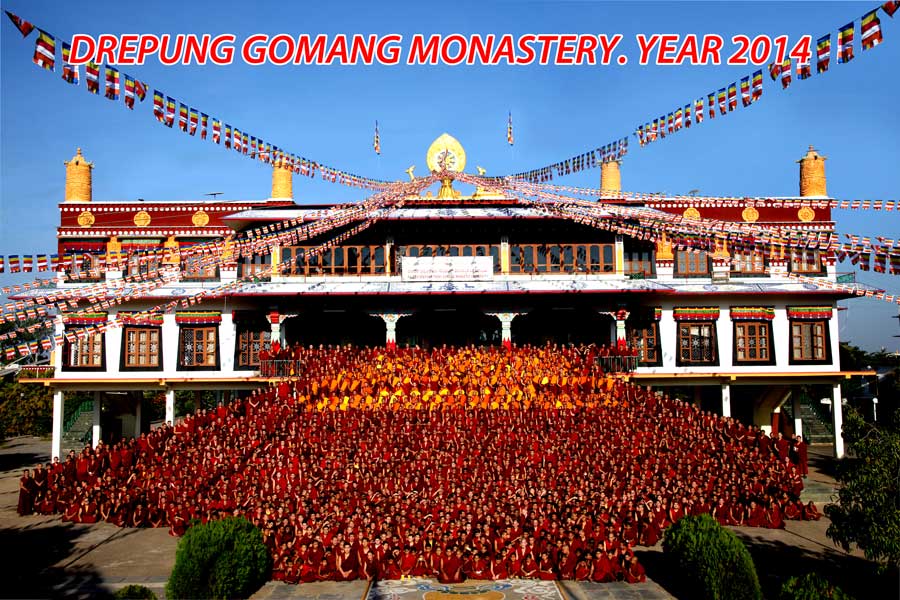

Jamyang Choje Tashi Pladen was one among Jamyang Lama Tsongkhapa’s four main and closest disciples. One day while handing over the precious white conch – shell to Jamyang Choje (The story of the precious white conch-shell can be found in the major collection of the “Langsheg Texts” Je Tsongkhapa) instructed him to establish a monastic institution and passed him a spiritual prophecy saying that the monastery will become a very sacred and famous centre of learning.
So, in 1416 CE, Jamyang Choje founded the Drepung Monastic University. Afterwards, under his guidance, seven branch colleges were established. Tashi Gomang and other six colleges. Drepung Gomang being the first and oldest .
Drepung Gomang has produced many eminent scholars like Drung Dakpa Rinchen, Khechok Galeb Takleb, Kunkhen Choejung Yabse, Kunkhen Jamyang Shepa, Gungthang Tenpai Donmey and many more others. At its zenith Gomang had over 5000 monks from all parts of Tibet, Russia, Mongolia, China and the Himalayan region as well.
After the communist Chinese invasion in 1959, only a handful of 100 monks from Drepung Gomang were able to flee Tibet and follow H. H. the Dalai Lama into exile in India. With the blessings and guidance of H. H. The Dalai Lama and support from the government of India, the monastery was able to regroup themselves and started the presevation of their endangered culture at Buxa ( a refugee camp) in north-east of India. Due to the extreme hot climate, poor health conditions and the lack of new novice monks joining the monastery, in 1969 the refugee camp was re-established in Mundgod, south of India. Where the current monastery lies.
In the early 80’s when the Communist Government relaxed the border restrictions, many Tibetan started fleeing their homeland. Hence, there was a huge influx of new arrivals all around India and Nepal. The Monastery also started receiving new arrivals in big group. Currently, there are 1955 monks studying at the monastery including international students from Mongolia, Russia, Kalmikya, Buriyat, Tuva and other parts of the globe.
In general, the curriculum study covers the five major subject (texts). The study on Buddhist Philosophy. The Younger monks attend a day school at the Monastery, where subjects like Tibetan, English, Maths and Science are taught till the Eighth grade. They are also introduced with the basic Buddhist studies. The school also provides free extra classes in Tibetan language, Grammar and Religious history to the lay children from the nearby villages during their summer vacation.
Monks also have the opportunity to learn about Traditional Tibetan craft, Thangka painting, carving and so on at the handicraft centre. Computer technology and other stream of education. All in all we have been able to preserve our spiritual and political duties with full respect to the leadership of H. H. the Dalai Lama and the Tibetan government in exile.

